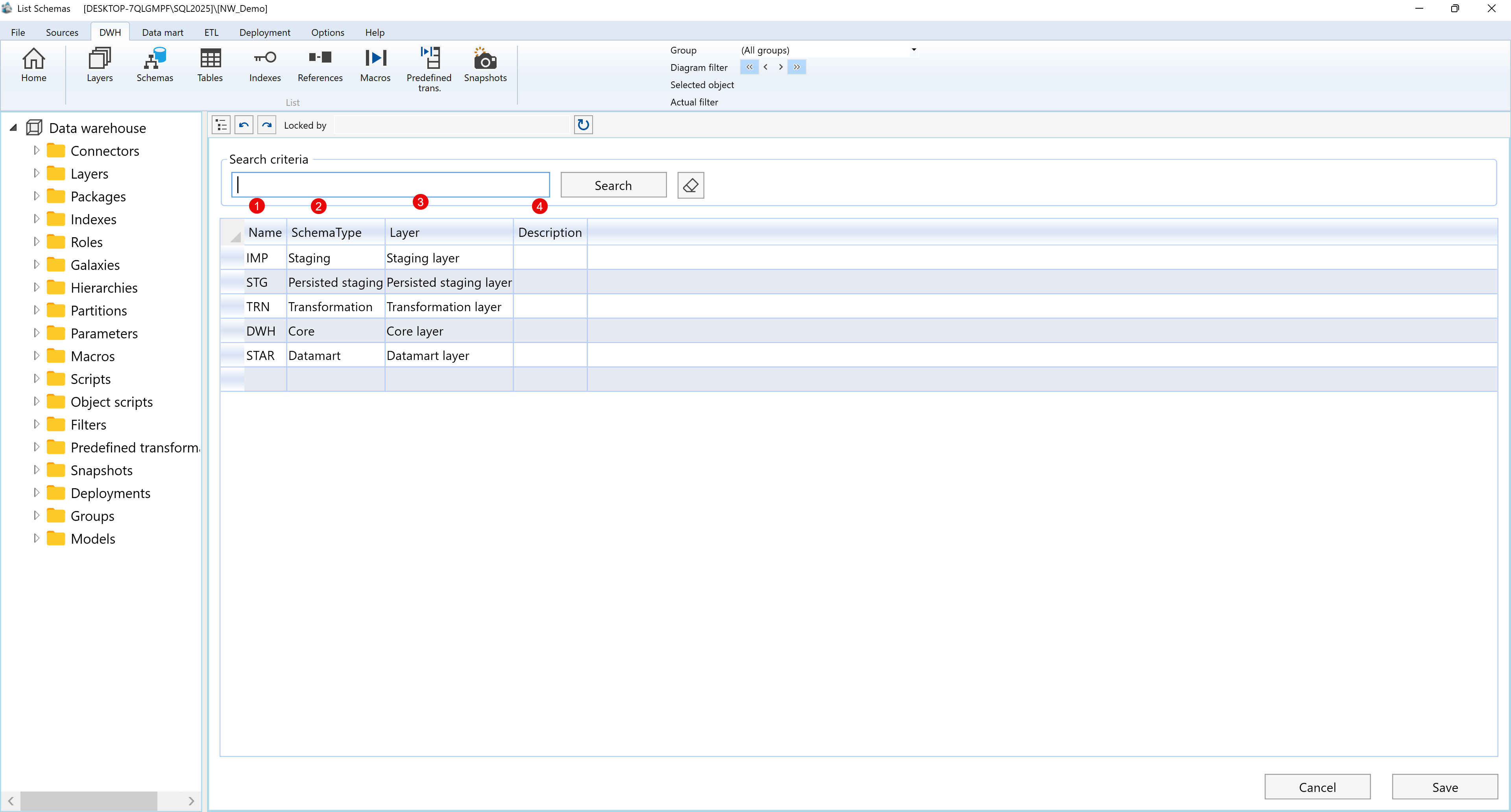Schemas
The Schemas feature in AnalyticsCreator defines the physical SQL schema name in which objects are deployed. Schemas are used to organize database objects within the target system and are associated with specific Schema Types and Layers to reflect architectural and processing roles.
Function
Schemas determine the physical namespace of tables, views, and other SQL objects. They support:
- Object organization within the target database
- Alignment with data architecture phases
- Governance through naming conventions and access control
- Association with specific Layers for sequencing
Unlike Layers, which control generation order, Schemas define the database location where objects are deployed.
Access
Schemas are configured in the Schemas management screen within the project. Each schema is defined by its Name, Schema Type, and the associated Layer.
Properties
| Property | Description |
|---|---|
| Name | SQL schema name used during deployment (e.g., STG, DWH) |
| Schema Type | Logical role of the schema in the data pipeline (e.g., Staging, Core, Datamart) |
| Layer | Associated Layer that controls the build sequence for the schema's objects |
| Description | Optional field for describing the schema's purpose or contents |
Screen Overview
The image below shows the List Schemas interface with columns labeled for easy identification

Behavior
- Schemas are assigned to objects during metadata modeling
- Schema names appear in fully qualified SQL object paths (e.g.,
STG.Customer) - Schemas must exist in the target system or be generated during deployment
- One schema can be linked to one Layer; each object belongs to one schema
Standard Schema Types
The following schema types are commonly used within a Kimball-based architecture:
| Name | Schema Type | Layer | Description |
|---|---|---|---|
| IMP | Staging | Staging layer | Used for transient import of raw data |
| STG | Persisted staging | Persisted staging layer | Stores cleaned and typed staging tables |
| TRN | Transformation | Transformation layer | Used for business rule and KPI calculations |
| DWH | Core | Core layer | Hosts conformed dimensions and facts |
| STAR | Datamart | Datamart layer | Star-schema layer for BI consumption |
Notes
- Schemas are reused across environments using environment configurations
- Schema Type and Layer must be defined to ensure proper generation behavior
- Schemas do not define processing logic — that is handled in the Layer and object definition